Is Hummus Low FODMAP?
Yes, in small amounts. This rich and creamy chickpea based dip is enlivened with lemon juice, cumin, garlic-infused olive oil and tahini. Up to ¼ cup (42 g) of canned and drained chickpeas are low FODMAP an appropriate even during Elimination Phase.
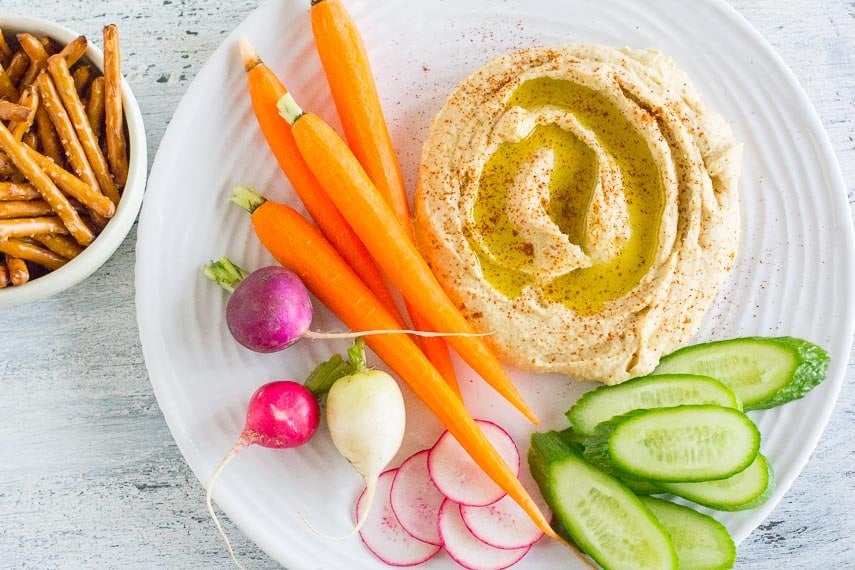
Let’s Talk Chickpeas
As mentioned above, the amount of chickpeas is important but so is what kind of chickpeas you are using. Canned chickpeas are best as a good amount of fructans will have leached into the water.
Follow the directions carefully.
You want to drain the canned chickpeas, then rinse and drain them again. Now you are ready to make low FODMAP hummus! We like Goya brand for their excellent flavor and texture. And we can often find them on sale; even their base price is often less than most!
Let’s Talk Tahini
Now, let’s discuss tahini. This is a classic condiment used in Middle Eastern, African and Mediterranean cuisines made from ground sesame seeds. There is tahini made from un-hulled sesame seeds and tahini made from hulled sesame seeds. Also, different brands will roast the seeds to varying degrees – or you can even find some tahini that is raw.
From my informal and subjective experiences I have preferred Israeli and Lebanese tahini over that from Greek sources. Your taste buds will dictate what you like!
Soom is a great women-owned company that makes a fabulous tahini from Ethiopian white Humera sesame seeds (often considered the finest) that many chefs and recipe developers love.

Now, if you look on the Monash University Smartphone App tahini is a dreaded Red Light. And you might not think to click through any further. But do it!
When you do, you will see that 2 tablespoons (30 g) is Green Light. AND, remember, this an Australian tablespoon, so for everyone else in the world you can actually have one-third more!
This all translates to us being able to make a classic hummus. Sometimes the natural oils separate; make sure to stir the tahini well before measuring.
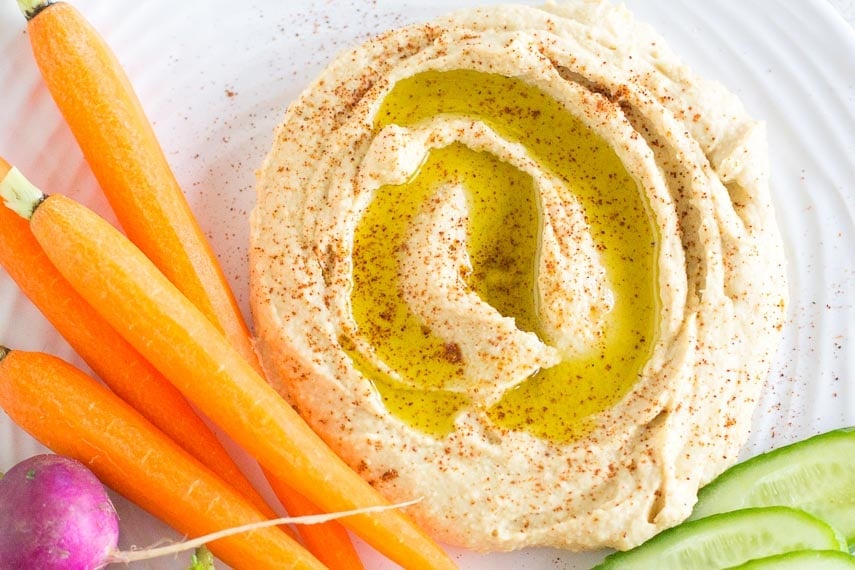
Super Smooth Hummus
I discovered during the creation of this recipe that there is a 2-minute additional step that makes a huge difference in the texture of the final product. I am going to suggest that you remove the skins from the chickpeas.
WAIT! Don’t run away! I know that sounds tedious and time consuming. It really isn’t!
I wouldn’t have believed it if I hadn’t experienced it myself. Here’s what you do: drain the chickpeas, then dump them into a bowl and cover with cool water by several inches. Use your hands to agitate them a bit, sinking your hands into the water and rubbing the skins loose from the chickpeas.
The skins will float and then you can skim them off with a slotted spoon and discard. I like to wear rubber gloves, which makes this technique even easier and has the added bonus of that fact that the thin skins stick to the gloves!
Drain the chickpeas again and proceed with recipe. You will be rewarded with the silkiest hummus ever!
Garlic Flavor? Yes!
The garlic flavor in our hummus comes from the Garlic-Infused Oil, which should be made with olive oil. For this purpose, as with our Basil Pesto, we like to make the oil with double the amount of garlic, or the hummus will have perhaps too subtle a garlic flavor.
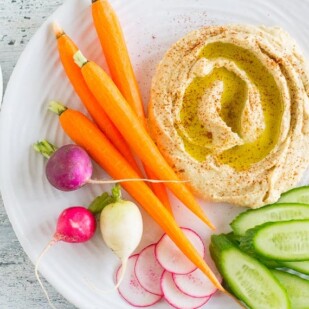
Hummus
Garlic is an expected flavor in a great hummus – and you can have that traditional experience with our low FODMAP hummus. It is based on garlic-infused olive oil and can be made in 10 minutes or less!
Low FODMAP Serving Size Info: Makes about 2 cups (480 g); about 14 servings; serving size about 2 tablespoons
Ingredients:
- 1, 15.5 ounce (439 g) can (about 1 ¾ cups) drained canned chickpeas, rinsed and drained again (see headnote above)
- 2 tablespoons well-stirred tahini
- 3 tablespoons Garlic-Infused Oil made with olive oil, plus extra
- 2 tablespoons lemon juice, preferably freshly squeezed, plus extra
- 1 teaspoon cumin
- Pinch cayenne
- Water if needed
- Kosher salt
- Freshly ground black pepper
- Paprika
- Chopped flat-leaf parsley, optional
Preparation:
-
Place chickpeas, tahini, 3 tablespoons of the oil, lemon juice, cumin and cayenne in food processor fitted with a metal blade. Pulse on and off, then process until it looks smooth. Stop machine, scrape down the sides and pulse on and off then process some more until ultra-smooth, adding water if needed to make a thick but smooth purée.
-
Taste and pulse in salt and pepper to taste. Do not underestimate the amount of salt and pepper that the hummus might need. Salt brings the flavors alive. Add more lemon juice, if you like. Scrape into a shallow bowl or onto a plate and use the back of a teaspoon to make an attractive swirl to hold extra Garlic-Infused Oil. Drizzle that oil on top! Sprinkle with paprika and add a bit of parsley, if desired. Hummus is ready to serve with your choice of low FODMAP vegetables (we are partial to carrots, cucumbers and radishes), or even low FODMAP crackers, pita bread or pretzels. Hummus may be refrigerated for up to 3 days; bring back to room temperature before serving.
Dédé’s Quick Recipe Tips Video
Notes:
Tips
- I know at first glance that the technique for removing the skins appears tedious. I promise you that it is so much easier than it sounds. Try it at least once and see if you end up with a hummus that you LOVE!
Nutrition
All nutritional information is based on third-party calculations and should be considered estimates. Actual nutritional content will vary with brands used, measuring methods, portion sizes and more. For a more detailed explanation, please read our article Understanding The Nutrition Panel Within Our Recipes.
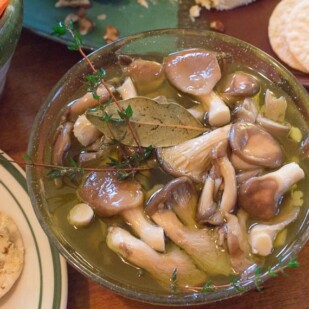





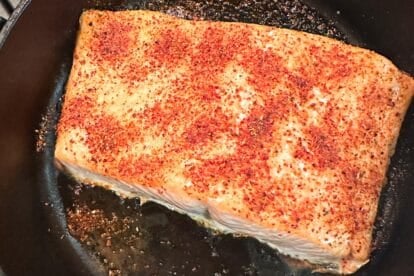
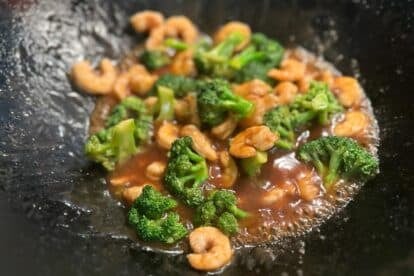
Definitely going to try this!
Should hulled or unhulled tahini be hard? I always found one quite bitter but I never know which one it was. Thank you x
Great question Tiffany. I do not think that hulled or unhealed makes much of a difference in texture – ultimately. Either way you will most likely have separation with oil floating to the top, leaving “hard” tahini behind. Storing upside down, stirring from time to time, and of course, using more frequently go a long way to solving this issue. Also, some brands just seem to be worse than others.
Sorry, Tiffany. This comment isn’t meant to be a reply to yours. It’s just that I couldn’t see any other way to comment. I wanted to point out a mistake in the nutritional information offered. I realize that the calculations are only estimates, but surely there’s more than 1 mg of sodium in this recipe. It seems to me that it would be over 100 mg.
Hi Tina, the salt is “to taste”, so can vary widely. Also, the draining of the chickpeas, rinsing and draining again affects (lessens) the sodium content.
Hi! Will definitely try this recipe! Do you know if it can be frozen? Or would it ruin the texture in some way?
Hi Tara, hummus can be frozen, but I have to admit that I never have! I would freeze for a max of 3 months in an airtight container and then slip that into a zip top bag.
I made this last night. It’s easy and delicious! I’ll definitely make it again. Also, I got Bush’s brand chickpeas and discovered they didn’t have skins (I found only 1 after soaking them in water) so getting higher quality beans may be worth a few extra cents.
Wow I will have to check out the Bush’s! That is pretty exciting LOL:)
This was excellent; way better than other hummus recipes I’ve tried. I ended up putting in about 1.5 tsp kosher salt and maybe another teaspoon of lemon juice. Thank you!
If anything I tend to under salt and it is so very individual. I like a good hit of acid though! So glad you like it.
This was one of those recipes that sacrifices absolutely nothing by being adapted for low FODMAP. The best hummus I have ever had. Took the advice for popping those beans out of their outer shell, and did not regret the time it took for that smooth finish. Tasted it after preparing it as suggested, and added in one bonus tb lemon juice with extra cayenne. Paired it with carrot sticks, cucumber slices & gluten free almond/rice crackers. Already have some portioned out in mini serving size containers ready for my next snack. So good, thank you!
Oh Jana! You made my day. I worked hard on this simple recipe – the little nuances make a huge difference! So glad that you and others are noticing and are happy!
Super delicious! This recipe makes really creamy hummus that tastes better than I remember store bought tasting!
I only added two tablespoons of garlic olive oil and used regular olive oil for the last tablespoons because I’m just now experimenting with garlic olive oil. But actually, I really liked that level of garlic flavor! Best of all, my super sensitive stomach didn’t get upset 😀 I’m super excited to get to enjoy hummus again!
Alyssa, thank you for writing. What a great review! So glad we were able to bring you something delicious that your sensitive stomach appreciated as well.
Hello. Just found your site. Very nice recipes. Could you please tell me if sumac is low fodmap? I love using it and believe it is very good for anti inflammatory properties. Thank you. Jane
Hi Jane, Thank you for the compliments and welcome to the community. Sumac has been lab tested by Monash University and is low FODMAP at 2 g or 1 teaspoon and becomes Moderate for FODMAPs at 44 g, High at 70 g. We believe it is Necessary to have the Monash smartphone app to follow this diet. You would be able to look up facts like this in a flash!
Excellent tasting hummus for fodmap followers. Is it freezable?
You can freeze hummus although the texture will likely change, and not for the better. At the very least it will need to be stirred and re-combined after freezing.
Hi, I’m excited to try this recipe. Thank you for sharing. I’m confused about the tahini. When I look it up on the Monash app, two tablespoons is red lighted. Just want to make sure I’m understanding this correctly. Thanks, Lisa
You have to look at serving sizes and stacking. The articles linked will help you.
This is the first time I’ve left a comment on a recipe I got off a website. Typically things have something I can’t eat or don’t like. The *only* thing I didn’t do was the cayenne (we don’t get along). This was absolutely delicious! My 6 and 8 year old helped me ‘skin’ all the beans and we had a blast. Fingers crossed I now have a staple recipe and my tummy doesn’t object!!
We feel honored! And I could picture you and your kids and it made me SMILE! Hope you poke around the site some more. We have loads of recipes and articles for you that are geared towards the family.